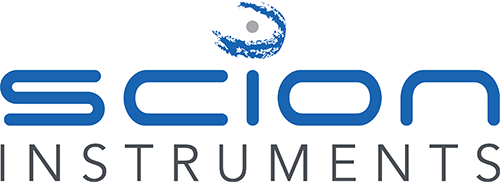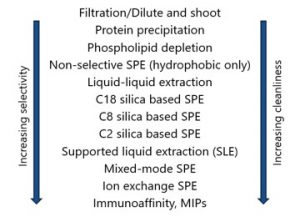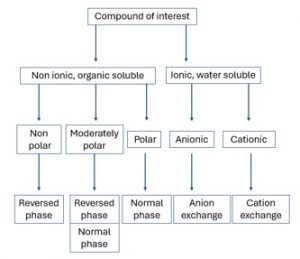GC-MS sample preparation and column choice guide
Sample Preparation for GC-MS
Samples including environmental pollutants, industrial byproducts, food contaminants and pesticides can be analysed by gas chromatography mass spectrometry (GC-MS).
A variety of compounds are suitable for analysis by GC-MS including: carotenoids, eicosanoids, esters, perfumes, terpenes, volatiles, flavonoids, lipids but also alcohols, alkaloids, amino acids, fatty acids, phenols, prostaglandins and steroids.
Before a sample can be analysed by GC-MS it may need to be prepared to get it to a suitable state for analysis. This can include cleaning up dirty matrices or making the sample more stable so it does not break down during analysis. There are an extensive range of sample preparation techniques which can be manual
or automated.
Figure 1 can be used as guidance for choosing a sample cleanup technique which could be suitable based on the selectivity needed and how dirty your sample is.
Figure 1: Sample preparation technique guidance based on sample cleanliness and selectivity required.
For more information see our choosing a sample preparation technique technical note.
Solid Phase Extraction
One choice for sample preparation could be solid phase extraction (SPE) which is commonly done through cartridges containing a solid packing material which along with solvent choice allows target analytes to be separated from the sample matrix. See our technical notes on SPE for more information.
The below diagram can help with the selection of the correct type of SPE cartridge for your target analyte(s). SPE cartridges are widely available from many manufacturers.
Figure 2: Solid phase extraction cartridge selection guidance based on analyte characteristics.
QuEChERS
QuEChERs is an acronym which stands for Quick, Easy, Cheap, Effective, Rugged and Safe. It is a very popular sample SPE preparation technique. QuEChERS are a highly efficient, cost effective and versatile technique which can be used for a range of applications. The aim of this sample preparation technique is to isolate the target analyte(s) and reduces sample matrix effects.
There are two main steps when using QuEChERS for sample preparation: Extraction and Cleanup. Sample extraction involves using a solvent and a salt mixture to separate the analytes into the organic phase whilst minimises matrix effects. Dispersive solid phase extraction cleanup removes any matrix interferences such as sugars and pigments from sample extract.
Derivatization
The aim of derivatization is to react the target analyte with a reagent to produce an analyte which can be easily detected by GC. This can mean adapting the analyte so it is more thermally stable or to increase its volatility. See our technical note on Derivatization Extraction for more information. Depending on the functionality group and character of your analyte(s), will depend on what reagent can be used for the derivatization.
Derivatization can be simple to a more complex technique which uses more hazardous chemicals. A more difficult derivatization may not be the most suitable sample preparation technique to conduct in your lab. It must be considered if a more simpler sample preparation can be performed and if GC-MS is the correct technique for your application.
Column choice
Once you have decided how to prepare your sample so it can be injected into a GC-MS then choosing the correct GC column for your sample is crucial. The stationary phase of a GC column allows for the separation of your sample before reaching the MS. The main principle when choosing a GC stationary phase is “like dissolves like”. This means you want to select a stationary phase which has similar characteristics to what you are analysing. See our technical notes on column choice for more information.
In the Table 1, example columns have been given which fit into the column polarity category but this is just one example and may not suit your specific application. As mentioned previously the stationary phase of your column and target analytes should be complementary to one another. See our column brochure for more information.
Table 1: Column choice selection guidance based on characteristics of compounds to be analysed by GC.



